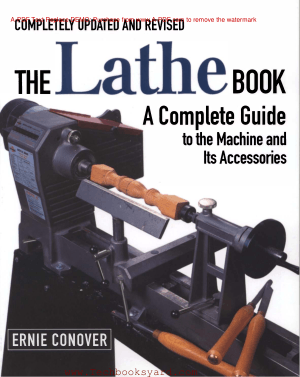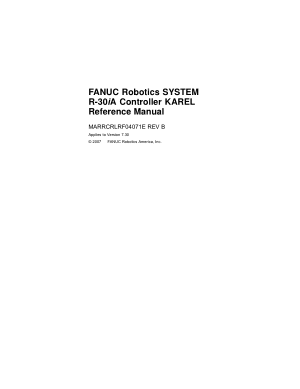Contents
List of Figures xv
List of Tables xxiii
Preface xxv
Chapter 1 Beams 1
1.1 Basic Theory 1
1.1.1 Introduction 1
1.1.2 Simple Elastic Bending 1
1.1.3 Shearing Force and Bending Moment……………………………………………2
1.1.4 Shearing Force and Bending Moment Diagrams…………………………….5
1.1.4.1 Cantilever with a Concentrated End Load………………………..5
1.1.4.2 Cantilever with a Uniformly Distributed Load, w, per
Unit Length………………………………………………………………….5
1.1.4.3 Simply Supported Beam with Central Concentrated Load…..6
1.1.4.4 Simply Supported Beam with Uniformly Distributed
Load, w, per Unit Length……………………………………………….7
1.2 Stresses Induced by Bending……………………………………………………………………7
1.2.1 Pure Bending……………………………………………………………………………..7
1.2.2 Stress Due to Bending…………………………………………………………………8
1.2.3 The General Bending Formula……………………………………………………..8
1.2.4 Example…………………………………………………………………………………….9
1.2.4.1 To Determine Reaction Forces…………………………………….. 10
1.2.4.2 Shear Force Diagram………………………………………………….. 11
1.2.5 Best Position of Supports for Beams with Overhanging Ends………… 12
1.3 Deflection in Beams…………………………………………………………………………….. 15
1.3.1 Area Moment…………………………………………………………………………… 15
1.3.1.1 Example……………………………………………………………………. 17
1.3.2 Slope Deflection………………………………………………………………………. 21
1.3.3 Deflection in Beams………………………………………………………………….26
1.3.3.1 Macaulay’s Method……………………………………………………..26
1.4 Shear Deflection in Beams…………………………………………………………………….29
1.4.1 Introduction……………………………………………………………………………..29
1.4.2 Determine the Shear Deflection in a Simply Supported Beam
with a Central Point Load………………………………………………………….30
1.4.3 Shear Deflection of Short Beams………………………………………………..30
1.4.4 Short Beam with Uniformly Distributed Load over the Entire Span….30
1.4.5 Shear Deflection in a Short Beam with Uniformly Distributed
Load over Center Span……………………………………………………………… 31
1.5 Properties of a Plane Area…………………………………………………………………….. 32
1.5.1 Notation………………………………………………………………………………….. 32
1.5.2 General Definitions………………………………………………………………….. 32
1.5.2.1 Area…………………………………………………………………………. 32
1.5.2.2 First Moment of Area…………………………………………………. 32
1.5.2.3 Centroid: Center of Area…………………………………………….. 33
1.5.2.4 Second Moment of Area. ……………………………………………..33
1.5.2.5 Product of Inertia. ……………………………………………………….34
1.5.2.6 Polar Moment of Inertia………………………………………………34
1.5.2.7 Radius of Gyration. ……………………………………………………..34
1.5.2.8 Moment of Inertia about Inclined Axes. …………………………35
1.5.2.9 Principal Axes. …………………………………………………………..35
1.5.2.10 Principal Moments of Inertia. ……………………………………….35
1.5.2.11 Mohr’s Circle for Moment of Inertia. …………………………….36
1.5.3 Torsional Constant (J). ………………………………………………………………36
1.5.3.1 For Solid Sections. ………………………………………………………37
1.5.3.2 For Closed Sections. ……………………………………………………37
1.5.3.3 For Open Sections………………………………………………………37
1.5.4 Section Property Tables. …………………………………………………………….37
1.5.5 Section Shear Centers. ………………………………………………………………56
1.5.5.1 Location of Shear Center: Open Sections. ……………………..57
1.5.5.2 Section Constants. ………………………………………………………57
1.5.5.3 Shear Flow in an Element. ……………………………………………57
1.5.5.4 Shear Force in an Element. …………………………………………..57
1.5.5.5 Torque/Moment Given by Element. ……………………………….57
1.5.5.6 Horizontal Location of the Shear Center. ……………………….58
1.5.5.7 Vertical Location of the Shear Center. …………………………..58
1.5.5.8 Shear Center of a Curved Web. …………………………………….58
1.5.5.9 Horizontal Location. ……………………………………………………59
Further Reading. ……………………………………………………………………………………………62
Chapter 2 Torsion of Solid Sections. ………………………………………………………………………………..63
2.1 Introduction. ………………………………………………………………………………………..63
2.2 Basic Theory. ……………………………………………………………………………………….63
2.3 Modulus of Section. ………………………………………………………………………………64
2.4 Angle of Twist. …………………………………………………………………………………….65
2.5 Pure Torsion of Open Sections. ………………………………………………………………65
2.5.1 Thick-Walled Open Sections. ……………………………………………………..65
2.5.2 Thin-Walled Open Sections. ………………………………………………………67
2.6 Thin-Walled Closed Sections. ………………………………………………………………..68
2.6.1 Single Cell Sections. ………………………………………………………………….68
2.7 Curved Members. …………………………………………………………………………………71
2.7.1 Curved Torsion Members. ………………………………………………………….71
2.7.2 Circular Section. ……………………………………………………………………….72
2.7.3 Square Section. …………………………………………………………………………73
2.7.4 Rectangular Sections. ………………………………………………………………..74
2.7.5 Springs. ……………………………………………………………………………………74
2.8 Torsional Failure of Tubes. …………………………………………………………………….75
2.8.1 Modulus of Rupture: A Theoretical Approach. …………………………….76
2.8.1.1 Instability Failure……………………………………………………….76
2.8.2 Material Failure under Plastic Torsion. ………………………………………..78
2.9 Sand Heap Analogy for Torsional Strength. ……………………………………………..78
2.9.1 Method (Solid Cross Section). …………………………………………………….78
Example 2.1. ………………………………………………………………………………………………….81
Example 2.2. ………………………………………………………………………………………………….81
Chapter 3 Design and Analysis of Lugs and Shear Pins. …………………………………………………….83
3.1 Notation. ……………………………………………………………………………………………..83
3.2 Introduction. ………………………………………………………………………………………..84
3.2.1 Method. …………………………………………………………………………………..85
3.2.2 Loading. ………………………………………………………………………………….85
3.2.3 Material Limitations. …………………………………………………………………85
3.2.4 Geometric Limitations. ……………………………………………………………..85
3.2.5 Failure Modes. ………………………………………………………………………….86
3.2.6 Notes. ………………………………………………………………………………………86
3.3 Analysis of Lugs with Axial Loading: Allowable Loads. …………………………..87
3.3.1 Analysis Procedure to Determine the Ultimate Axial Load. …………..87
3.4 Analysis of Lugs with Transverse Loading: Allowable Loads. ……………………91
3.5 Oblique Loading: Allowable Loading. …………………………………………………….94
3.5.1 Analysis Procedure. ………………………………………………………………….95
3.5.2 Out-of-Plane Loading. ……………………………………………………………….95
3.6 Bearing at Lug-to-Pin or -Bush Interface. ………………………………………………..96
3.7 Shear Pin Analysis……………………………………………………………………………….96
3.7.1 Shear Pin Bending in Double Shear Joint. ……………………………………96
3.7.1.1 Shear Pin Bending: Load Peaking between Center Lug and Pin. ……………………………………………………………….98
3.7.1.2 Shear Pin Bending, Including Excess Strength of Lug. ……99
3.7.2 Pin Shear. ………………………………………………………………………………100
3.8 Bush Analysis. ……………………………………………………………………………………101
3.9 Special Cases. …………………………………………………………………………………….102
3.9.1 Oil Holes……………………………………………………………………………….102
3.9.1.1 Axial Load. ………………………………………………………………102
3.9.1.2 Transverse Load. ……………………………………………………….102
3.9.1.3 Oblique Load. …………………………………………………………..102
3.9.2 Eccentric Hole. ……………………………………………………………………….102
3.9.3 Multiple Shear Connection. ………………………………………………………102
3.10 Stresses Due to Interference-Fit Pins and Bushes. …………………………………..104
3.10.1 Solid Circular Interference-Fit Shear Pins. …………………………………104
3.10.2 Interference-Fit Bushes. …………………………………………………………..105
3.11 Stress Concentration Factor at Lug-to-Pin Interface. ……………………………….106
3.12 Examples. ………………………………………………………………………………………….106
Further Reading. ………………………………………………………………………………………….111
Chapter 4 Mechanical Fasteners. …………………………………………………………………………………..113
4.1 Threaded Fasteners. …………………………………………………………………………….113
4.2 Basic Types of Threaded Fasteners:. ……………………………………………………..113
4.3 Thread Standards……………………………………………………………………………….113
4.4 Thread Profiles. ………………………………………………………………………………….113
4.5 Thread Series. …………………………………………………………………………………….113
4.6 Thread Designations. …………………………………………………………………………..115
4.6.1 Metric Series. …………………………………………………………………………115
4.6.2 Imperial (Inch Series). ……………………………………………………………..115
4.7 Material and Strength Designations. ……………………………………………………..117
4.8 Tensile and Shear Stress Areas. …………………………………………………………….118
4.8.1 Tensile Stress Area. …………………………………………………………………118
4.8.2 Shear Area of External Threads. ……………………………………………….119
4.8.3 Shear Area of Internal Threads. ………………………………………………..120
4.9 Length of Engagement. ………………………………………………………………………..120
4.9.1 Length of Engagement Using Equal Strength Materials. ……………..120
4.9.2 Length of Engagement Using Dissimilar Strength Materials. ……….121
4.10 Fastener and Nut Design Philosophies. ………………………………………………….121
4.11 Pitching of Fasteners. ………………………………………………………………………….122
4.11.1 Pressure Cone. ………………………………………………………………………..122
4.12 Tension Connections. …………………………………………………………………………..122
4.13 Torque-Tension Relationship. ……………………………………………………………….123
4.14 Proof Load and Proof Stress. ……………………………………………………………….124
4.14.1 Fastener Preload. …………………………………………………………………….124
4.15 Introduction to Pretension. …………………………………………………………………..124
4.15.1 Why Preload?. ………………………………………………………………………..126
4.16 Joint Diagrams. …………………………………………………………………………………..126
4.16.1 Joint Diagrams with an External Load Applied. …………………………127
4.16.2 Effects of a Large Increase in the External Load. ……………………….128
4.16.3 The Effect of a Compressive External Load. ………………………………129
4.16.4 Nomenclature. ………………………………………………………………………..130
4.16.5 Notes. …………………………………………………………………………………….130
4.17 Fastener Stiffness. ………………………………………………………………………………131
4.18 Joint Stiffness. ……………………………………………………………………………………133
4.18.1 Calculation of Load Distribution Using Fastener/Joint Stiffness. …..133
4.19 Thermal Loading. ……………………………………………………………………………….134
4.19.1 Initial Tension in Bolt. ……………………………………………………………..135
4.20 Fasteners Subject to Combined Shear and Tension. …………………………………136
4.20.1 Interaction Curves: Load Ratios and Factors of Safety. ……………….136
4.20.2 Interaction Curve. ……………………………………………………………………136
4.20.3 Interaction Equation. ……………………………………………………………….137
4.21 Eccentric Loads. …………………………………………………………………………………137
Example 4.1. ………………………………………………………………………………………………..137
4.21.1 Permissible Shear Stress. ………………………………………………………….139
4.22 Prying Forces. …………………………………………………………………………………….139
Example 4.2. ………………………………………………………………………………………………..139
4.23 Fasteners Subject to Alternating External Force. …………………………………….141
4.23.1 Factor of Safety (FoS) with No Preload. …………………………………….142
4.23.2 The Minimum Preload to Prevent Any Loss of Compression. ………143
4.23.3 Calculate the FoS for the Bolt with a Preload of 22,000 N. …………..143
4.23.4 The Minimum Force in the Part when the Preload is 22,000 N. ……145
Chapter 5 Limits and Fits. …………………………………………………………………………………………….147
5.1 Introduction. ………………………………………………………………………………………147
5.2 Tolerance Grade Numbers. …………………………………………………………………..147
5.2.1 Tolerance. ………………………………………………………………………………147
5.2.2 International Tolerance Grade Numbers. ……………………………………147
5.3 Fundamental Deviations. ……………………………………………………………………..148
5.3.1 Preamble. ……………………………………………………………………………….148
5.3.2 Fundamental Deviation. …………………………………………………………..149
5.3.3 Fundamental Deviations for Shafts. …………………………………………..150
5.3.4 Fundamental Deviations for Holes. ……………………………………………150
5.3.5 Upper and Lower Deviations……………………………………………………151
5.3.5.1 Shaft Letter Codes c, d, f, g, and h. ……………………………..151
5.3.5.2 Shaft Letter Codes k, n, p, s, and u. ……………………………..151
5.3.5.3 Hole Letter Code H. …………………………………………………..151
5.4 Preferred Fits Using the Basic Hole System. …………………………………………..152
5.4.1 Loose Running Fit (Example). ………………………………………………….152
5.4.2 Location Clearance Fit (Example). ……………………………………………153
5.5 Surface Finish. ……………………………………………………………………………………154
Chapter 6 Thick Cylinders. …………………………………………………………………………………………..155
6.1 Introduction. ………………………………………………………………………………………155
6.2 A Thick-Walled Cylinder Subject to Internal and External Pressures. ……….155
6.3 General Equations for a Thick-Walled Cylinder Subject to an Internal Pressure. ……………………………………………………………………………………………157
6.4 The General Equation for a Thick-Walled Cylinder Subject to Internal and External Pressures. ……………………………………………………………………….158
Example 6.1: Interference Fit. ………………………………………………………………………..160
Example 6.2: Radial Distribution of Stress. ……………………………………………………..163
Chapter 7 Compound Cylinders. …………………………………………………………………………………..165
7.1 Introduction. ………………………………………………………………………………………165
7.2 Shrinkage Allowance. …………………………………………………………………………165
Example 7.1. ………………………………………………………………………………………………..167
Example 7.2. ………………………………………………………………………………………………..170
Further Reading. ………………………………………………………………………………………….174
Chapter 8 The Design and Analysis of Helical Compression Springs Manufactured from Round Wire. ………………………………………………………………………………………………..175
8.1 Elastic Stresses and Deflections of Helical Compression Springs Manufactured from Round Wire. ………………………………………………………….175
8.1.1 Introduction. …………………………………………………………………………..175
8.1.2 Notation. ………………………………………………………………………………..176
8.1.3 Notes. …………………………………………………………………………………….176
8.1.4 Compression Spring Characteristics. …………………………………………177
8.1.4.1 Material Specifications. ……………………………………………..177
8.1.4.2 Wire Diameter. …………………………………………………………177
8.1.4.3 Mean Diameter. ………………………………………………………..177
8.1.4.4 Spring Index c. ………………………………………………………….177
8.1.4.5 Spring Rate. ……………………………………………………………..177
8.1.4.6 Number of Active Coils. …………………………………………….177
8.1.4.7 Total Number of Coils. ………………………………………………177
8.1.4.8 Solid Length. ……………………………………………………………178
8.1.4.9 Initial (Free) Length. …………………………………………………178
8.1.4.10 Clearance at Maximum Load. …………………………………….178
8.1.4.11 Direction of Wind. …………………………………………………….178
8.1.4.12 Allowable Stresses. ……………………………………………………178
8.1.4.13 Finish. ……………………………………………………………………..178
8.1.5 Static Shear Stress. ………………………………………………………………….178
8.1.5.1 Basic Formulas. ………………………………………………………..178
8.1.5.2 Maximum Shear Stress. ……………………………………………..179
8.1.5.3 Useful Relations. ……………………………………………………….179
8.1.5.4 Relationships. ……………………………………………………………180
8.1.6 Spring and Deflection Characteristics. ……………………………………….185
8.1.7 Solid Length Characteristics. ……………………………………………………186
8.1.8 Buckling of Compression Springs. …………………………………………….186
8.1.9 Transverse Loading. ………………………………………………………………..187
8.1.10 Increase of Spring Diameter under Compression. ……………………….189
8.1.10.1 Ends Free to Rotate. …………………………………………………..189
8.1.10.2 Ends Restrained against Rotation. ……………………………….189
8.1.11 Helix Warping in Compression Springs. …………………………………….189
8.1.12 Natural Frequency. ………………………………………………………………….189
8.1.12.1 First Natural Frequency. …………………………………………….190
8.1.13 Example 1. ……………………………………………………………………………..190
8.1.13.1 Design of a Helical Compression Spring. ……………………..190
8.1.13.1 End Coil Formulation. ……………………………………………….191
8.1.13.2 Working Stress. …………………………………………………………191
8.1.13.3 Determination of D, d, and c. ……………………………………..191
8.1.13.4 Determining Spring Rate, Deflection Characteristics, and Number of Coils. …………………………………………………194
8.1.13.5 Conformity with Limitations of Section 8.3…………………195
8.1.13.6 Closed Length Characteristics. ……………………………………195
8.1.13.7 Buckling Characteristics. ……………………………………………196
8.1.13.8 Determination of Coil Growth under Compression. ………197
8.1.13.9 Natural Frequency of the Spring. ………………………………..197
8.1.13.10 Stress Increase Due to Helix Warping. …………………………198
8.2 Allowable Stresses for Helical Compression Springs Manufactured from Round Wire. ……………………………………………………………………………….198
8.2.1 Static Strength Data………………………………………………………………..198
8.2.2 Fatigue Data. ………………………………………………………………………….198
8.2.2.1 Estimation of an S-N Curve. ………………………………………199
8.2.3 Factors Affecting Spring Life. ………………………………………………….199
8.2.3.1 Spring Geometry. ……………………………………………………..199
8.2.3.2 Corrosion. ………………………………………………………………..201
8.2.3.3 Surface Finish. ………………………………………………………….201
8.2.3.4 Elevated Temperatures………………………………………………201
8.2.4 Treatments for Improving the Fatigue Life of Springs. ………………..201
8.2.4.1 Prestressing. ……………………………………………………………..201
8.2.4.2 Shot Peening. ……………………………………………………………201
8.2.4.3 Abrasive Cleaning. ……………………………………………………201
8.3 Notes on the Design of Helical Compression Springs Made from Round Wire. ……………………………………………………………………………….205
8.3.1 General Notes. ………………………………………………………………………..205
8.3.2 Prestressing. …………………………………………………………………………..205
8.3.3 Choice of Material. ………………………………………………………………….206
8.3.3.1 Operation Reliability. ………………………………………………..206
8.3.3.2 Corrosion and Protection. …………………………………………..206
8.3.3.3 Working Temperature. ……………………………………………….206
8.3.3.4 Special Requirements. ……………………………………………….206
8.3.4 Loading. ………………………………………………………………………………..206
8.3.4.1 Cyclic Loading and Fatigue Properties. ……………………….208
8.3.4.2 Transverse Loading. ………………………………………………….208
8.3.4.3 Impact. …………………………………………………………………….208
8.3.4.4 Eccentric Loading…………………………………………………….208
8.3.4.5 Buckling. ………………………………………………………………….208
8.3.5 Design Features. ……………………………………………………………………..209
8.3.5.1 End Forms. ……………………………………………………………….209
8.3.5.2 Free Length. ……………………………………………………………..210
8.3.5.3 Solid Length. ……………………………………………………………210
8.3.5.4 Tolerances. ……………………………………………………………….210
8.3.5.5 Surface Finish. ………………………………………………………….211
8.3.5.6 Surface Treatment. …………………………………………………….211
8.3.6 Design Procedures. ………………………………………………………………….211
8.3.6.1 Basic Design. ……………………………………………………………211
8.3.7 Manufacturing Requirements…………………………………………………..211
8.4 Nested Helical Compression Springs. ……………………………………………………214
8.4.1 General Notes to Section 8.4. ……………………………………………………214
8.4.2 Example 2. ……………………………………………………………………………..220
8.4.3 Nested Springs in Series. ………………………………………………………….223
8.4.4 Example 3. ……………………………………………………………………………..224
Further Reading. ………………………………………………………………………………………….227
Chapter 9 Introduction to Analytical Stress Analysis and the Use of the Mohr Circle. …………229
9.1 Introduction. ………………………………………………………………………………………229
9.2 Notation. ……………………………………………………………………………………………229
9.3 Two-Dimensional Stress Analysis. ………………………………………………………..230
9.4 Principal Stresses and Principal Planes. ………………………………………………..231
9.4.1 Maximum Shear Stress. …………………………………………………………..232
9.4.2 Geometric Interpretation. …………………………………………………………233
9.5 Construction of the Mohr Circle. ………………………………………………………….234
9.5.1 Conclusions and Deductions. ……………………………………………………235
9.6 Relationship between Direct and Shear Stress. ……………………………………….236
9.7 The Pole of the Mohr Circle. ………………………………………………………………..237
9.7.1 A Few Special Cases. ………………………………………………………………237
9.8 Examples. ………………………………………………………………………………………….239
9.9 The Analysis of Strain. ………………………………………………………………………..245
9.9.1 Sign Conventions for Strains. ……………………………………………………245
9.10 Comparison of Stress and Strain Equations. …………………………………………..246
9.10.1 The Strain Rosette. ………………………………………………………………….247
9.10.2 Construction. ………………………………………………………………………….247
9.10.3 Conclusion. …………………………………………………………………………….251
9.11 Theories of Elastic Failure. ………………………………………………………………….251
9.11.1 Steady Load Failure Theories. ………………………………………………….251
9.11.2 Maximum Principal Stress (Rankin’s) Theory. …………………………..251
9.11.3 Maximum Principal Strain (St. Venant’s) Theory. ………………………252
9.11.4 Maximum Shear Stress (Guest’s or Tresca’s) Theory. ………………….253
9.11.5 Distortion Energy Theory. ……………………………………………………….253
9.11.5.1 Strain Energy (Haigh’s) Theory………………………………….253
9.11.5.2 Shear Strain Energy (Von Mises’s) Theory. ………………….255
9.11.6 Conclusions. …………………………………………………………………………..255
9.12 Interaction Curves, Stress Ratio’s Margins of Safety, and Factors of Safety. …256
9.12.1 Interaction: Stress Ratio. ………………………………………………………….256
9.12.2 Interactive Curve. ……………………………………………………………………256
9.12.3 Interaction, Stress Ratios, Yield Conditions. ………………………………257
9.12.4 Interaction Equations: Yield Conditions. ……………………………………258
9.12.5 Interaction Equations: Failure Conditions………………………………….259
9.12.5.1 Compact Structures: No Bending. ……………………………….259
9.12.6 Compact Structures: Bending. ………………………………………………….259
9.12.7 General Interaction Relationships (Figures 9.33–9.36). ………………..260
9.12.8 Determination of Safety Factors. ………………………………………………263
Chapter 10 Introduction to Experimental Stress Analysis………………………………………………….265
10.1 Photoelasticity. …………………………………………………………………………………..265
10.1.1 The Principles of Photoelasticity………………………………………………265
10.1.2 Principles. ………………………………………………………………………………266
10.1.3 Isoclinics and Isochromatics. ……………………………………………………266
10.1.4 Plane Polariscope. …………………………………………………………………..267
10.1.5 Circular Polariscope. ……………………………………………………………….267
10.1.6 Two-Dimensional and Three-Dimensional Photoelasticity. ………….267
10.1.7 Further Development. ………………………………………………………………268
10.2 Photoelastic Coatings. …………………………………………………………………………268
10.2.1 Preparation of the Coating. ………………………………………………………269
10.2.2 Analysis of the Coating. …………………………………………………………..269
10.2.3 Coating Materials. …………………………………………………………………..270
10.2.4 Full Field Interpretation of Strain Distribution. …………………………..270
10.3 Introduction to Brittle Lacquer Coatings. ………………………………………………270
10.3.1 Introduction. …………………………………………………………………………..270
10.3.2 Loading and Testing Techniques. ………………………………………………271
10.3.3 Effects of Change in Relative Humidity and Temperature. …………..271
10.3.4 Measuring Strain under Static Loading. …………………………………….272
10.4 Introduction to Strain Gauges. ……………………………………………………………..272
10.4.1 Vibrating Wire Strain Gauges. ………………………………………………….272
10.4.2 Electrical Resistance Strain Gauges. ………………………………………….273
10.4.3 Unbalanced Bridge Circuit. ………………………………………………………275
10.4.4 Null Balance or Balanced Bridge Circuit. …………………………………..275
10.4.5 Installation Procedures. ……………………………………………………………275
10.5 Extensometers……………………………………………………………………………………277
10.5.1 Contact Extensometers. ……………………………………………………………277
10.5.2 Noncontact Extensometers. ………………………………………………………278
10.5.2.1 General Notes. ………………………………………………………….278
10.5.3 Applications. …………………………………………………………………………..278
Chapter 11 Introduction to Fatigue and Fracture. ………………………………………………………………279
11.1 Introduction and Background to the History of Fatigue. ………………………….279
11.1.1 Later Developments. ………………………………………………………………..281
11.1.2 Recent Developments. ……………………………………………………………..282
11.1.3 Basic Definitions. ……………………………………………………………………284
11.2 The Fatigue Process……………………………………………………………………………285
11.3 Initiation of Fatigue Cracks. …………………………………………………………………287
11.4 Factors Affecting Fatigue Life. …………………………………………………………….288
11.4.1 Stress Amplitude. ……………………………………………………………………289
11.4.2 Mean Stress. …………………………………………………………………………..289
11.5 Stress Concentrations. …………………………………………………………………………291
11.5.1 The Elastic Stress Concentration Factor. ……………………………………292
11.5.2 The Fatigue Stress Concentration Factor. …………………………………..293
11.6 Structural Life Estimations. …………………………………………………………………294
11.7 Introduction to Linear Elastic Fracture Mechanics. …………………………………294
11.7.1 Preamble. ……………………………………………………………………………….295
11.7.2 Comparison of Fatigue and Fracture Mechanics. ………………………..295
11.7.3 The Difference between Classical Fatigue Analysis and Fracture Mechanics. ………………………………………………………………..295
11.7.4 Stress Intensity. ………………………………………………………………………296
11.7.4.1 General Stress Intensity Solution. ………………………………..297
11.7.5 Fracture Toughness and Crack Growth. ……………………………………..298
11.8 Fatigue Design Philosophy. ………………………………………………………………….300
11.8.1 Fail-Safe. ……………………………………………………………………………….300
11.8.2 Safe-Life. ……………………………………………………………………………….300
11.9 Cycle Counting Methods. …………………………………………………………………….301
11.9.1 Introduction to Spectrum Cycle Counting. …………………………………301
Chapter 12 Introduction to Geared Systems. …………………………………………………………………….305
12.1 Introduction. ………………………………………………………………………………………305
12.2 Types of Gears. …………………………………………………………………………………..305
12.2.1 Spur Gears. …………………………………………………………………………….305
12.2.2 Internal Spur Gears. ………………………………………………………………..306
12.2.3 Rack and Pinion. …………………………………………………………………….306
12.2.4 Helical Gears. …………………………………………………………………………307
12.2.5 Double Helical Gears. ……………………………………………………………..308
12.2.6 Spiral Bevel Gears. ………………………………………………………………….308
12.2.7 Bevel Gears. …………………………………………………………………………..308
12.2.8 Spiral Gears. …………………………………………………………………………..309
12.2.9 Worm and Worm Wheels. ………………………………………………………..309
12.3 Form of Tooth. ……………………………………………………………………………………310
12.4 Layout of Involute Curves. …………………………………………………………………..311
12.5 Involute Functions. ……………………………………………………………………………..313
12.6 Basic Gear Transmission Theory. …………………………………………………………316
12.6.1 Torque and Efficiency. ……………………………………………………………..317
12.7 Types of Gear Trains. ………………………………………………………………………….317
12.7.1 Simple Gear Train. ………………………………………………………………….317
12.7.2 Compound Gears. ……………………………………………………………………319
12.8 Power Transmission in a Gear Train. …………………………………………………….319
12.9 Referred Moment of Inertia, (Ireferred). ……………………………………………………322
12.10 Gear Train Applications. ……………………………………………………………………..323
Chapter 13 Introduction to Cams and Followers. ………………………………………………………………329
13.1 Introduction. ………………………………………………………………………………………329
13.2 Background. ……………………………………………………………………………………….329
13.3 Requirements of a Cam Mechanism. …………………………………………………….330
13.4 Terminology. ……………………………………………………………………………………..330
13.4.1 Plate Cams. …………………………………………………………………………….330
13.4.2 Cylindrical Cams. …………………………………………………………………..331
13.4.3 Typical Cam Follower Arrangements for Plate-Type Cams. …………332
13.5 The Timing Diagram. ………………………………………………………………………….332
13.6 Cam Laws. …………………………………………………………………………………………333
13.6.1 Constant Velocity of the Follower. …………………………………………….335
13.6.2 Parabolic Motion. ……………………………………………………………………336
13.6.3 Simple Harmonic Motion. ………………………………………………………..336
13.6.4 Cycloidal Motion. ……………………………………………………………………339
13.7 Pressure Angle. …………………………………………………………………………………..341
13.8 Design Procedure. ………………………………………………………………………………342
13.9 Graphical Construction of a Cam Profile. ………………………………………………342






